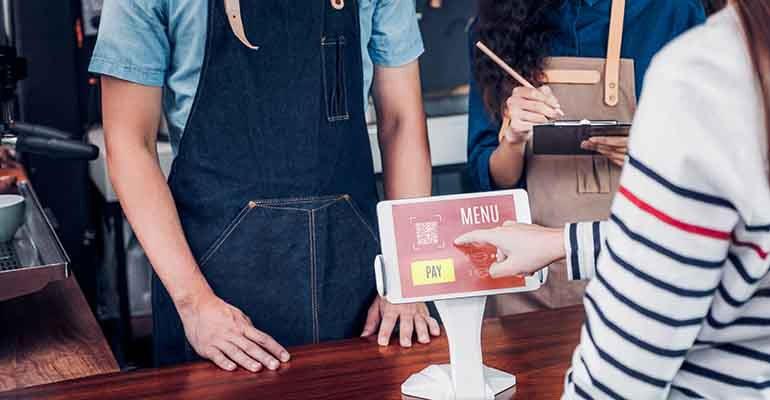When Toast implemented a 99-cent consumer-facing fee on all orders in June, the backlash was strong and immediate—so much so that Toast decided to walk back the “order processing fee” less than a month later. During Tuesday’s second quarter earnings call, Toast CEO Chris Comparato called the move a “mistake” that they won’t make again and will instead listen to their customers and investors before making similar moves in the future.
The criticism against Toast is just one part of the fee fatigue that has permeated not only the restaurant industry — from backlash against delivery order fees to criticism of health insurance surcharges — but has reached a fever pitch in other industries including events, movies, and airline ticketing.
“I think restaurants are tired of it all,” Jeremy Julian, COO of Custom Business Solutions and founder of Restaurant Technology Guys said. “They’re trying to figure out how to make money, which is hard enough in the restaurant industry, especially when you have all of these fees. Plus, if a guest doesn’t fulfill their order and cancels the order, the fee is still due, and you have to pay taxes on it.”
However, even if President Biden’s proposed Junk Fee Protection Act passed, would legislation really change anything in the restaurant tech industry? After all, it’s likely, experts have suggested, that tech companies that remove unpopular consumer-facing fees will have to make it up some other way, including not just Toast but also Clover, which initially implemented a similar $1.50 consumer-facing fee, but told Nation’s Restaurant News that the fee has been waived since April 2020, and there are no current plans to reintroduce it.
For Toast, this quarter was the first time the company had positive cash flow as it had otherwise been operating at a deficit. Likely, implementing the 99-cent fee would have improved profitability in the long-term and now that fee will instead be rolled into future pricing increases.
“At the end of the day…this does not have an impact on our ability to leverage packaging and pricing over time,” Comparato said during Tuesday’s Toast earnings call. “Our customers understand that the products and innovation require investment, and they consistently tell us that they're willing to pay for value.”
When the fee was initially announced, operators were responding negatively not to the fee itself, but because it was implemented suddenly and did not give them any flexibility to eat the fees themselves instead of automatically passing it onto their customers without their consent.
“I'm shocked that they made the decision to reverse it but I'm very happy that they did,” Shawn Walchef, Cali BBQ founder and Toast customer and advisory board member, said. “Most companies are doing the research…but there are plenty of tech companies out there that charge consumers directly. Toast claims the research has showed they don’t care, but I beg to differ because we see it on the front lines: people choosing to spend less money as we increase prices.”
Although most restaurants have gotten accustomed to ordering fees from third-party delivery services and credit card processing fees that have been in place for decades, tech SaaS companies have begun implementing other fees to cover unexpected costs of expanding their capabilities. GoTab, for example, has been charging a QR code ordering fee of 25 cents plus 1% of each order since 2019 to pay for the “Card Not present” premium. Restaurants have the option of paying the fee themselves (with a discount if they choose this option) or turning it over to the customer. GoTab CEO Tim McLaughlin said that it’s always been crucial to implement fees in a transparent manner and to give their customers options.
“At some point, transparency is not useful when it's so convoluted because nobody really wants to examine a super long receipt just to buy a burger,” McLaughlin said. “It's just more involved than it's worth… Our philosophy is that 1% is below anyone’s pain threshold—anything more than that becomes behavior-altering. It’s entirely up to the operator.”
Two of the major issues restaurant technology faces industry oversaturation — operators have thousands of tech vendors to choose from — and profitability due to the overreliance on venture capital. According to both Shawn Walchef and Jeremy Julian, many of the largest tech vendors, including Toast, make their money through credit card transaction fees – not software subscriptions.
The past several years have been a tech boom for the restaurant industry as outside investors continued to pour money into tech startups—creating several unicorn-level startups in the process. But venture capital is not a never-ending money pit and investments need to be paid back over time. So, how does that affect restaurants? As vendor services become more expensive (and many might even go out of business altogether), operators will have to be more selective with their tech stack.
“In the early days, it was venture capital firms that were footing the bill and I think at some point, it needs to transition from that to mature companies with either restaurants or guests footing the bill,” Noah Glass, CEO of Olo said. “Operators are interested in doing more with less and lean into the relationships they have with mission-critical software platforms to take advantage of additional capabilities and package those for a lower cost.”
Contact Joanna at [email protected]m

